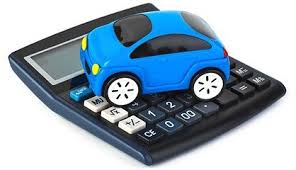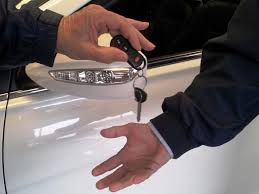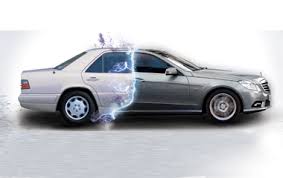It’s car shopping time! The winter nights are closing in, Christmas is around the corner and mere days’ past Santa’s visit, there’s the excitement of the new registration period and the potential for putting a shiny new 161 plate on your driveway.
First though, you’ve got to maximise the existing car trade in value to make the most at trade-in time and here is where things often get tricky. It’s easy to understand getting a lower-than-expected trade-in if your car is scruffy, has lots of miles on it and your service record is patchy. But more than a few buyers pull on to the forecourt in immaculate cars and are still quoted trade in values which they feel are low-ball.
There are ways to combat this, but first you need to do a little homework. One of the most serious limitations of valuing a second hand car in Ireland is that we have no national equivalent of the UK’s Black Book or Glass’ Guide. Those are official, publicly available valuations charts which can at least give you a decent ballpark figure of what your car is worth to a dealer. For more on this topic see our value my car page.
Valuation figures in Ireland
 Here in Ireland, dealers and the car industry jealously guard their valuations and try to keep the systems they use in the realm of witchcraft, which is hardly helpful and it can in fact sour a deal for them. According to Auto Trader, 19 per cent of car buyers said that poor service, including low trade-in valuations, were what drove them away from one dealer and on to another’s forecourt. “We know from other research that not achieving an anticipated part-exchange value is cited as the biggest cause of deal breakdown among consumers, reinforcing the need to align expectations on pricing. Helping consumers with part exchange values and making sure that cars in stock are closely priced to the retail market value gives sellers the best chance of making a sale” said Auto Trader’s Nick King.
Here in Ireland, dealers and the car industry jealously guard their valuations and try to keep the systems they use in the realm of witchcraft, which is hardly helpful and it can in fact sour a deal for them. According to Auto Trader, 19 per cent of car buyers said that poor service, including low trade-in valuations, were what drove them away from one dealer and on to another’s forecourt. “We know from other research that not achieving an anticipated part-exchange value is cited as the biggest cause of deal breakdown among consumers, reinforcing the need to align expectations on pricing. Helping consumers with part exchange values and making sure that cars in stock are closely priced to the retail market value gives sellers the best chance of making a sale” said Auto Trader’s Nick King.
Part of the problem then is that lack of transparency, and the occasionally byzantine way the car trade works. Owners currently only have one real way to work out the value of their car, and that’s to look online at classified ads. The problem with this though is that most people just take the face value of an ad for a car like theirs and fail to take some important figures into account. First and foremost is the dealer’s margin – which will be in the region of €1,500 to €2,000 depending on the car, so you’ve got to allow for that in the trade-in price. Secondly, and this is especially the case when looking at private adverts for cars, people are often overly optimistic when setting a price for their own car. So to get a rough value for your own car, you need to look at the ads, take away at least €1,000 off the top to allow for misplaced optimism and then knock off another €2k for dealer margin. Now you’re getting close to a more realistic value for your own car.
The market brings other factors
 There’s more though and it’s a much tougher thing to predict – the way the market is going. It’s easy enough to make some broad pronouncements about what sells and when. Obviously, convertibles and cabriolets are going to be more popular in summer, while 4x4s and SUVs will be more sell-able in the depths of winter. Beyond that though, the market is fickle and constantly moving and that’s something that has to be factored into the dealer’s valuation of your car.
There’s more though and it’s a much tougher thing to predict – the way the market is going. It’s easy enough to make some broad pronouncements about what sells and when. Obviously, convertibles and cabriolets are going to be more popular in summer, while 4x4s and SUVs will be more sell-able in the depths of winter. Beyond that though, the market is fickle and constantly moving and that’s something that has to be factored into the dealer’s valuation of your car.
Let’s say, for arguments’ sake, that you’re trading in a Ford Focus. A nice, reliable, popular family car, which, theoretically, the dealer will have no trouble finding a new owner for and so you should be getting tip-top value, right? Well, not necessarily. Have a look at the dealer’s forecourt first. Are there half-a-dozen similar Focuses lined up in the front? Then your car is the seventh Focus he’s going to have to sell, and that means he won’t want to have too much money tied up in it, as it will take time to turn that stock over, and lengthy stock turnover means lower profits.
There are other imponderables. Supposing that the customer before you, also trading in a Focus, was well-known to the dealer and had bought a succession of cars from him or her? Well, the dealer is going to be duty bound, no matter the pressures of re-selling it, to offer them top value for their Focus, and that’s going to take some of the shine off your own. It sounds like a small, petty thing but all these variations add up to hard cash at the end of the day. You can, of course, try playing dealers off against one another, but that’s an effort often doomed to failure – dealers, even rival ones, talk to one another after all.
The best approach
 So, how do you ensure you get the best possible trade-in? Well, for a start you prepare the car just as you would for a private sale. Gather all the paperwork into a neat folder (including, hopefully, the fully-stamped service record with a thick sheaf of receipts) and make sure that the car is clean, inside and out and that you’ve polished away any minor imperfections in the paint. A sparkling car is always worth just a little more.
So, how do you ensure you get the best possible trade-in? Well, for a start you prepare the car just as you would for a private sale. Gather all the paperwork into a neat folder (including, hopefully, the fully-stamped service record with a thick sheaf of receipts) and make sure that the car is clean, inside and out and that you’ve polished away any minor imperfections in the paint. A sparkling car is always worth just a little more.
Then, why not try to create a good relationship with your local dealer? Why be so bothered about the new number plate, when you could potentially get better value by waiting until the dealer is looking for a car just like yours for another customer? That’s the time to trade-in – when someone wants your car, not when you want a new one. A bit of legwork and plenty of elbow grease – that’s how you get the best car trade in values.